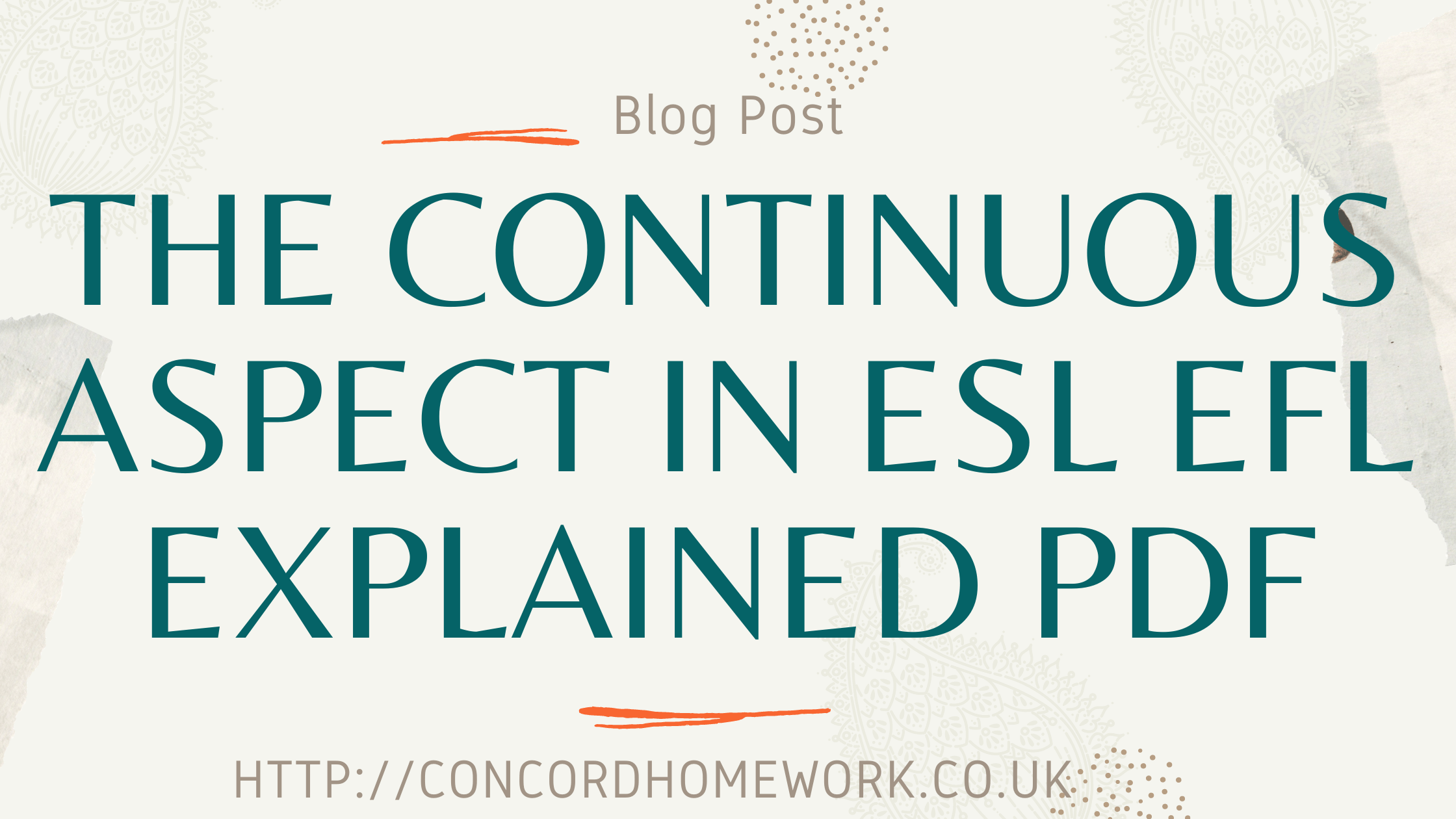The continuous aspect
Continuous verb forms express activities, or a series of activities, that happen at some point between their beginning and end. The continuous aspect focuses on the duration of activity: we are aware of the passing of time. The activity is not permanent, and its duration is temporary.
Examples:
- I’m staying with friends until I find a place of my own. (temporary)
- Why are you wearing those silly trousers? (in progress)
- I’ve been learning English for years. (duration)
The activity may not be complete.
- I’ve been painting the fence of the garden. (We don’t know if it’s finished.)
- He was dying, but the doctors saved him. (He didn’t ‘finish’ dying.) Who’s been eating my cheese? (There’s some left.)
Compare: Who’s eaten my cheese?(It’s all gone.)
The continuous aspect is generally avoided with state verbs, which by their nature express permanence, and not specific duration.
- I understand your situation. I love chocolate.
The action of many verbs, by definition, lasts a long time, for example, live and work. The use of the continuous aspect gives these actions limited duration and makes them temporary.
- Hans is living in London while he’s learning English.
- I’m working as a waiter until I go to university.
The action of some other verbs lasts a short time. These are often found in the simple aspect.
- She’s cut her finger. He hit me.
In the continuous aspect, the action of these verbs becomes longer or repeated.
- I’ve been cutting wood, (for a long time)
- He was hitting me. (again and again)
Note
It has become common recently to use the continuous aspect even with state verbs, to add a sense of immediacy in a colloquial context.
- I’m liking your new hairstyle!
- I’m really wishing she hadn’t come!
Download “The Continuous Aspect” explanation in PDF.
Download “The Tenses Review” worksheet (simple or continuous, active or passive) in PDF.
The continuous verb forms in English are used to describe actions that are happening over a period of time. They highlight that the action is temporary, ongoing, and not yet complete. For example:
- “I’m staying with friends until I find a place of my own.” shows a temporary situation.
- “Why are you wearing those silly trousers?” is about an action happening right now.
- “I’ve been learning English for years.” indicates an action that has been happening for some time and is still continuing.
In summary, continuous verbs give us information about the duration and temporary nature of actions. They are not used for permanent states but for activities that have a clear start and end within a timeframe.
“Thank you for taking the time to explore this topic with us! We hope you found the information helpful and insightful. Have any thoughts, questions, or additional examples to share? We’d love to hear from you in the comments below!
Don’t forget to spread the word by sharing this blog with your friends, family, and colleagues. Together, let’s continue to learn, grow, and connect with the world around us. Happy reading and sharing!”




















